
- Home
- Travel Packages
- Top Destination
-
Travel Attraction
By Category
Top Attraction

- Travel Agents
- Car Rentals
- Hotels
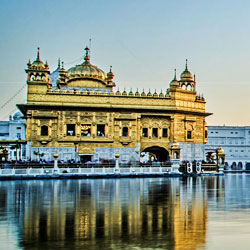
About Golden Temple The Golden Temple, also known as Sri Harmandir Sahib, is the holiest shrine in Sikhism and one of the most revered spiritual sites in India. Located in Amritsar, Punjab, the temple attracts millions of visitors from all over the world every year to witness its stunning architecture, peaceful ambience, and the divine experience it offers. The temple is a symbol of equality, unity, and peace, welcoming people from all walks of life, irrespective of their religion, caste, or creed. Architectural Facts The Golden Temple is renowned for its stunning architecture, with its shimmering gold-plated exterior that reflects beautifully in the surrounding waters of the Amrit Sarovar (pool of nectar). The temple complex also includes the Akal Takht, the Sikh temporal seat, and the langar hall, which serves free meals to all visitors regardless of their background. History The foundation of the Golden Temple was laid by Guru Arjan Dev, the fifth Sikh Guru, in the 16th century. The construction of the temple was completed in 1604, and it has since been a place of worship, reflection, and spiritual enlightenment for Sikhs and people of all faiths. Location The Golden Temple is located in the city of Amritsar, Punjab, India. Visiting Hours The Golden Temple is open to visitors 24 hours a day, seven days a week. Gurudwara Services and Events The Golden Temple hosts daily prayers, kirtan (devotional music), and langar (community kitchen) services. Special events and festivals are celebrated with great fervor, including Gurpurabs (Sikh religious anniversaries) and Vaisakhi. The temple is open on weekends as well for visitors. Weddings at Golden Temple Gurudwara Yes, the Golden Temple Gurudwara is open for weddings, known as Anand Karaj ceremonies, which are considered sacred in Sikhism. Couples from around the world come to tie the knot in this divine setting. Accessibility and Directions The Golden Temple can be reached by car or public transport. There is parking available near the temple complex, and wheelchair accessibility is provided for visitors with mobility challenges. Visitor’s Information Entry to the Golden Temple is free for all visitors. While there is no strict dress code, it is advised to dress modestly and cover your head before entering the temple premises as a sign of respect. Guides are available to provide information about the temple's history and significance. Nearby attractions to visit around include Jallianwala Bagh and the Partition Museum. The best time to visit the Golden Temple is during the early morning or evening hours to witness the tranquil beauty of the temple and participate in the prayers and rituals.
Explore More
About The Akshardham Temple in Gandhinagar The Akshardham Temple in Gandhinagar, also known as the Swaminarayan Akshardham Temple, is a majestic Hindu temple dedicated to Bhagwan Swaminarayan. It is located in the capital city of Gujarat, Gandhinagar, and is one of the most visited religious sites in India. The temple complex is a symbol of spirituality, art, architecture, and Indian culture. Architecture of Akshardham Temple The Akshardham Temple showcases a blend of traditional Indian architectural styles with modern techniques. The central deity of the temple is Lord Swaminarayan, who is surrounded by various other deities and spiritual leaders. The temple complex is built using pink sandstone and features intricately carved sculptures and motifs. The main monument of the temple stands 108 feet tall and is a sight to behold both during the day and night when it is beautifully lit up. History The Akshardham Temple was inaugurated in 1992 by Pramukh Swami Maharaj, the spiritual leader of the Bochasanwasi Akshar Purushottam Swaminarayan Sanstha (BAPS). The temple was built to promote spiritual and cultural values and to provide a place of worship and meditation for devotees. The construction of the temple took several years and involved the efforts of thousands of artisans and craftsmen. Best Time To Visit The best time to visit the Akshardham Temple is during the festival of Diwali, Navratri, or Janmashtami when the temple is beautifully decorated and illuminated. However, the temple is open throughout the year and welcomes visitors of all faiths and backgrounds. It is advisable to visit the temple during the early morning or evening to avoid the rush of visitors. How To Reach The Akshardham Temple is easily accessible by road from Gandhinagar and Ahmedabad. Visitors can take a cab, auto-rickshaw, or public bus to reach the temple complex. The nearest railway station is in Gandhinagar, and the nearest airport is in Ahmedabad. Both cities are well connected by road and rail networks, making it convenient for travelers to reach the temple. Significance Of The Akshardham Temple The Akshardham Temple is not just a place of worship but also a center for cultural and spiritual learning. The temple complex features various exhibitions, displays, and activities that showcase the rich heritage and values of Hinduism. It is a place where visitors can find peace, solace, and inspiration in the serene surroundings and divine atmosphere of the temple. The Akshardham Temple is a must-visit destination for anyone seeking spiritual enlightenment and cultural enrichment. With its stunning architecture, rich history, and spiritual significance, the Akshardham Temple in Gandhinagar stands as a testament to the devotion and craftsmanship of its creators. Visiting this magnificent temple is a truly enlightening and soul-stirring experience that leaves a lasting impression on all who come to seek its blessings.
Explore More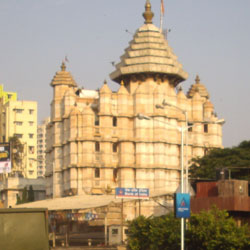
About The Siddhivinayak Temple The Siddhivinayak Temple is a famous Hindu temple located in Mumbai, Maharashtra. Dedicated to Lord Ganesha, it is one of the most visited and revered temples in India. The temple is known for fulfilling the wishes of its devotees and is believed to bring good luck and prosperity to those who worship there. Architecture of Siddhivinayak Temple The Siddhivinayak Temple is built in the traditional Indian architectural style with a dome-shaped roof and intricately carved pillars. The main sanctum sanctorum houses the idol of Lord Ganesha, which is adorned with gold and precious stones. The temple complex also includes shrines dedicated to other Hindu deities like Lord Shiva and Goddess Parvati. History The history of the Siddhivinayak Temple dates back to the 18th century when a childless woman named Deubai Patil commissioned the construction of the temple as a dedication to Lord Ganesha. Over the years, the temple gained popularity among devotees from all walks of life, who come to seek the blessings of Lord Ganesha for various reasons. Best Time To Visit The Siddhivinayak Temple is open to devotees all year round, but the best time to visit is during the festivals of Ganesh Chaturthi and Maghi Ganesh Jayanti when the temple is beautifully decorated and attracts a large number of worshippers. The temple is also less crowded during weekdays, making it a peaceful place for prayer and meditation. How To Reach The Siddhivinayak Temple is located in Prabhadevi, a suburb of Mumbai. It is easily accessible by road, rail, and public transport. The nearest railway station is Dadar, which is just a short walk away from the temple. Visitors can also take a taxi or bus to reach the temple from any part of Mumbai. Significance Of The Siddhivinayak Temple The Siddhivinayak Temple holds great significance for devotees who believe that worshipping Lord Ganesha at this temple can help them overcome obstacles and attain success in their endeavors. Many people offer prayers and perform rituals at the temple to seek blessings for health, wealth, and happiness. The temple is also known for its charitable activities and social initiatives, making it a symbol of faith and benevolence. In conclusion, the Siddhivinayak Temple is not just a place of worship but a spiritual sanctuary where devotees can connect with the divine and find solace in times of need. Its rich history, beautiful architecture, and sacred atmosphere make it a must-visit destination for anyone seeking blessings and inner peace.
Explore More
About The Mahalaxmi Temple The Mahalaxmi Temple, located in Mumbai, is a sacred Hindu temple dedicated to the goddess Mahalaxmi. The temple is one of the oldest temples in the city and holds immense religious significance among devotees. The goddess Mahalaxmi is worshipped here as the presiding deity, symbolizing wealth, prosperity, and well-being. Architecture of Mahalaxmi Temple The Mahalaxmi Temple showcases traditional Hindu temple architecture with intricate carvings and sculptures adorning its walls and pillars. The main sanctum sanctorum houses the idol of Mahalaxmi adorned with jewels and flowers. The temple's entrance is marked by a tall tower, known as a shikara, which is a prominent feature of South Indian temple architecture. History The Mahalaxmi Temple has a rich history dating back several centuries. It is believed that the temple was built during the reign of the Maratha Empire in the 18th century. Over the years, the temple has undergone renovations and expansions, but its spiritual essence and significance have remained intact. The temple attracts thousands of devotees every year who come to seek the blessings of the goddess. Best Time To Visit The best time to visit the Mahalaxmi Temple is during the festival of Navratri, which is celebrated with great enthusiasm and fervor. Navratri is a nine-day festival dedicated to the worship of the goddess Durga, of which Mahalaxmi is considered an incarnation. The temple is beautifully decorated during this time, and devotees flock to offer their prayers and seek blessings. How To Reach The Mahalaxmi Temple is centrally located in Mumbai and is easily accessible by both public and private transportation. The nearest railway station is Mahalaxmi Station, which is just a short walk away from the temple. Additionally, local buses and taxis are readily available for those who prefer to travel by road. The temple's convenient location makes it a popular destination for both locals and tourists. Significance Of The Mahalaxmi Temple The Mahalaxmi Temple holds immense significance for devotees who believe in the goddess's power to bring wealth, prosperity, and happiness into their lives. Many people visit the temple to seek blessings for success in their endeavors, good health, and overall well-being. The temple is also known for its charitable activities and social initiatives, making it a symbol of faith, devotion, and community service. In conclusion, the Mahalaxmi Temple in Mumbai stands as a testament to the enduring faith and devotion of its worshippers. With its rich history, beautiful architecture, and spiritual significance, the temple continues to attract devotees from all walks of life who come to seek solace, blessings, and divine grace from the goddess Mahalaxmi. Whether you are a devout follower or simply a curious visitor, a visit to the Mahalaxmi Temple is sure to leave you with a sense of peace, serenity, and spiritual fulfillment.
Explore More
About Christ Church, Shimla Location: Christ Church is located on The Ridge in Shimla, Himachal Pradesh, India. It is easily accessible and is a prominent landmark in the city. Visiting Hours: The church is open to visitors from 8:00 AM to 6:00 PM every day of the week. History: Christ Church was built in 1857 to serve the Anglican British community in Shimla. It is one of the oldest churches in North India and is a fine example of Neo-Gothic architecture. Church Services and Events: The church holds regular services on Sundays at 10:00 AM. Special events and festivals are also celebrated, with timings varying based on the occasion. The church is also available for weddings. Architectural Facts: Christ Church is known for its majestic appearance with stained glass windows, a clock tower, and a large crucifix. The church's interior is adorned with wooden pews and a beautiful altar. Accessibility and Directions: Christ Church is easily accessible by car or public transport. There is parking available nearby, and the church is wheelchair accessible. Visitor's Information: There is no entry fee to visit Christ Church. Guides are available for hire for a more in-depth tour of the church. Nearby attractions include The Ridge, Mall Road, and Scandal Point. There is no dress code, but visitors are encouraged to dress modestly.
Explore More
About The Iskcon Temple The Iskcon Temple in Mumbai, officially known as the Sri Sri Radha Rasabihari Ji Temple, is a spiritual retreat located in Juhu. This temple is a part of the International Society for Krishna Consciousness (Iskcon) and serves as a center for spiritual enlightenment, cultural activities, and community service. Architecture Of Iskcon Temple The Iskcon Temple in Mumbai is known for its breathtaking architecture. The main structure of the temple is built in the traditional Indian style of architecture, with intricate carvings and vibrant colors. The temple complex also includes beautifully landscaped gardens, meditation halls, and a vegetarian restaurant. History The Iskcon Temple in Mumbai was established in 1978 by the followers of A.C. Bhaktivedanta Swami Prabhupada, the founder of the Iskcon movement. Since its inception, the temple has been a popular destination for devotees and tourists alike, attracting visitors from all over the world who come to seek spiritual solace and participate in the various cultural events held at the temple. Best Time To Visit The best time to visit the Iskcon Temple in Mumbai is during the festivals of Janmashtami and Diwali when the temple is beautifully decorated and spiritual celebrations are held. The temple is also a serene retreat for those seeking inner peace and tranquility throughout the year. How To Reach The Iskcon Temple in Mumbai is easily accessible by both public and private transportation. The nearest railway station is Andheri, which is well-connected to the rest of the city. Visitors can also take a bus or taxi to reach the temple from any part of Mumbai. Significance Of The Iskcon Temple The Iskcon Temple in Mumbai holds great significance for followers of the Iskcon movement as a place of worship, meditation, and spiritual learning. The temple is dedicated to Lord Krishna and Radha, and serves as a center for spreading the teachings of devotion and love for God. Visitors to the temple can participate in prayers, chanting, and other spiritual activities that help in connecting with their inner selves and finding peace and harmony in their lives.
Explore More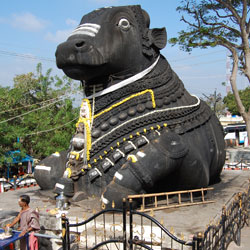
About The Bull Temple The Bull Temple, also known as Nandi Temple, is a famous religious site located in Basavanagudi area of Bangalore, Karnataka. It is dedicated to Nandi, the sacred bull of Lord Shiva, and is one of the largest Nandi temples in the world. The temple is a popular tourist attraction and a significant religious site for Hindus. Architecture of Bull Temple The architecture of the Bull Temple is a fine example of Dravidian style, characterized by intricate carvings and impressive sculptures. The main deity of the temple is a huge monolithic statue of Nandi, measuring approximately 15 feet in height and 20 feet in length. The statue is carved out of a single granite rock and is adorned with garlands, trinkets, and bells. The temple complex also houses a small shrine dedicated to Lord Shiva, along with various other smaller shrines dedicated to different deities. The outer walls of the temple are adorned with colorful frescoes depicting mythological scenes and stories from Hindu scriptures. History The Bull Temple was built in the 16th century by Kempe Gowda, the founder of Bangalore. According to legend, the temple was constructed to appease a sacred bull that was causing havoc in the area. The bull was believed to be an incarnation of Nandi, the vahana (mount) of Lord Shiva. The temple was built around the giant Nandi statue to honor and worship the sacred bull. Over the centuries, the Bull Temple has become a symbol of religious harmony and cultural heritage in Bangalore. It attracts devotees and tourists from all over India and beyond, who come to seek blessings and marvel at the architectural beauty of the temple. Best Time To Visit The best time to visit the Bull Temple is during the winter months from October to February when the weather is pleasant and conducive for sightseeing. It is also recommended to visit the temple during important Hindu festivals like Maha Shivaratri, Ugadi, and Diwali, when the temple is adorned with decorations and celebrations are held with great fervor. It is advisable to visit the temple in the early morning or late evening to avoid crowds and witness the daily rituals and prayers conducted by the temple priests. Photography is allowed inside the temple premises, but it is advisable to respect the religious sentiments of the devotees and maintain decorum. How To Reach The Bull Temple is located in Basavanagudi, which is easily accessible from all parts of Bangalore. The nearest railway station is Bangalore City Junction, which is about 6 kilometers away from the temple. Visitors can hire a cab or take a bus from the railway station to reach the temple. For those traveling by air, the nearest airport is Kempegowda International Airport, which is approximately 40 kilometers away from the temple. From the airport, visitors can hire a taxi or take a bus to reach the temple. Local buses and auto-rickshaws are also available for transportation within the city. Significance Of The Bull Temple The Bull Temple holds immense religious significance for Hindus, as it is dedicated to Nandi, the sacred bull of Lord Shiva. Nandi is considered the divine vehicle and chief attendant of Lord Shiva, and is believed to be a symbol of strength, virility, and righteousness. Devotees visit the Bull Temple to seek blessings for prosperity, well-being, and fulfillment of desires. It is believed that offering prayers and worshiping Nandi at the temple can bring good luck and ward off evil forces. The temple is also a popular pilgrimage site for couples seeking blessings for a happy and harmonious married life. In conclusion, the Bull Temple in Bangalore is not just a religious site but also a cultural landmark that showcases the rich heritage and architectural brilliance of Karnataka. It is a must-visit destination for tourists, history buffs, and spiritual seekers looking to immerse themselves in the divine aura of Hindu mythology and traditions.
Explore More
About The Lakshmana Temple in Khajuraho The Lakshmana Temple is one of the most prominent and well-preserved temples in Khajuraho, a UNESCO World Heritage Site located in the state of Madhya Pradesh, India. Dedicated to the Hindu deity Lord Vishnu, the temple stands as a testament to the rich architectural and cultural heritage of India. Architecture of Lakshmana Temple Built in the 10th century by the Chandela dynasty, the Lakshmana Temple exemplifies the Nagara style of architecture. The temple is made of sandstone and features intricate carvings and sculptures that depict various scenes from Hindu mythology. The main sanctum of the temple houses a three-headed idol of Lord Vishnu along with other smaller idols of celestial beings. The temple is known for its shikhara, a tower-like structure that rises above the sanctum. The shikhara is adorned with miniature sculptures of deities and mythical creatures, showcasing the exceptional craftsmanship of the artisans who built the temple. The outer walls of the temple are also decorated with beautiful carvings of gods, goddesses, and celestial beings. History The Lakshmana Temple was built by King Yasovarman of the Chandela dynasty in the 10th century. The temple was constructed as a dedication to Lord Vishnu, who is believed to be the preserver of the universe in Hindu mythology. The temple was a place of worship and pilgrimage for the followers of Vishnu and served as a center of religious and cultural activities during the reign of the Chandela dynasty. Over the centuries, the temple has undergone several renovations and restorations to preserve its architectural beauty and historical significance. Today, the Lakshmana Temple stands as a symbol of the rich cultural heritage of India and attracts visitors from all around the world. Best Time To Visit The best time to visit the Lakshmana Temple in Khajuraho is during the winter months of October to March when the weather is pleasant and ideal for exploring the temple complex. The cool and dry weather during this time allows visitors to enjoy the intricate carvings and sculptures of the temple without the discomfort of extreme heat. It is also recommended to visit the temple early in the morning or late in the evening to avoid the crowds and witness the beauty of the temple in a peaceful and serene environment. The annual Khajuraho Dance Festival held in February is another great time to visit the Lakshmana Temple as it showcases traditional Indian dance forms against the backdrop of the ancient temple complex. How To Reach The Lakshmana Temple is located in the town of Khajuraho in the state of Madhya Pradesh, India. The nearest airport to Khajuraho is the Khajuraho Airport, which is well-connected to major cities in India such as Delhi, Mumbai, and Varanasi. From the airport, visitors can hire a taxi or take a public bus to reach the temple complex. Khajuraho also has a railway station that is connected to cities like Delhi, Agra, and Varanasi. Visitors can take a train to Khajuraho and then hire a taxi or an auto-rickshaw to reach the Lakshmana Temple. Significance Of The Lakshmana Temple The Lakshmana Temple holds great significance for the followers of Lord Vishnu and Hindu mythology. The temple is believed to be a place of divine energy and spiritual enlightenment, making it a popular pilgrimage site for devotees and tourists alike. The intricate carvings and sculptures of the Lakshmana Temple serve as a visual representation of Hindu mythology and provide insight into the religious beliefs and cultural practices of ancient India. The temple stands as a symbol of architectural brilliance and artistic mastery, showcasing the rich heritage of the Chandela dynasty and the people of Khajuraho. Overall, the Lakshmana Temple in Khajuraho is a must-visit destination for anyone interested in history, culture, and spirituality. Its timeless beauty and historical significance continue to captivate visitors and inspire awe and reverence for the ancient architectural wonders of India.
Explore More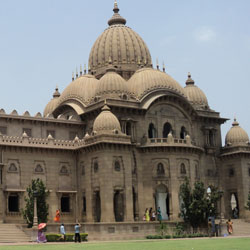
About The Belur Math Temple The Belur Math Temple, located in Belur near Kolkata, is a prominent place of worship and spiritual retreat for followers of the Ramakrishna Movement. The temple complex is a symbol of unity and harmony, bringing together people of different faiths and backgrounds under one roof. Architecture of Belur Math Temple The architecture of the Belur Math Temple is a blend of various styles, including Hindu, Islamic, and Christian influences. The main temple is built in the traditional Bengali style of architecture, with intricate carvings and sculptures that depict scenes from Hindu mythology. The temple's central dome is influenced by the Mughal style of architecture, while the surrounding buildings showcase a unique combination of European and Indian design elements. History The Belur Math Temple was established in 1899 by Swami Vivekananda, a disciple of the Indian saint Sri Ramakrishna. The temple was built as a tribute to Sri Ramakrishna and serves as the headquarters of the Ramakrishna Math and Ramakrishna Mission. Over the years, the temple has become a center of spiritual and cultural activities, attracting devotees and visitors from all over the world. Best Time To Visit The best time to visit the Belur Math Temple is during the annual celebrations of Sri Ramakrishna's birthday, which usually falls in February. During this time, the temple is adorned with lights and decorations, and special prayers and rituals are conducted to honor the saint's teachings. Visitors can witness the vibrant atmosphere and participate in the festivities that take place during this time. How To Reach The Belur Math Temple is easily accessible from Kolkata, which is located approximately 6 kilometers away. Visitors can take a taxi, bus, or train to reach the temple complex. The nearest railway station is Belur Math, which is well connected to Kolkata and other major cities in the region. From the railway station, it is a short walk to the temple complex. Significance Of The Belur Math Temple The Belur Math Temple holds great significance for followers of the Ramakrishna Movement and serves as a place of spiritual solace and enlightenment. The temple complex is not just a place of worship but also a center for social service, education, and cultural exchange. It stands as a symbol of unity and universal brotherhood, promoting the teachings of Sri Ramakrishna and Swami Vivekananda to the world. Overall, the Belur Math Temple is a place of great historical and cultural importance, attracting devotees and visitors alike with its beautiful architecture, serene surroundings, and profound spiritual atmosphere.
Explore More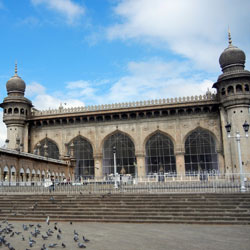
About The Mecca Masjid The Mecca Masjid, located in Hyderabad, India, is one of the oldest and largest mosques in the country. It is a revered place of worship for Muslims and a popular tourist attraction for visitors from all over the world. The mosque is known for its grand architecture, historical significance, and spiritual importance. Architecture of Mecca Masjid The Mecca Masjid is a prime example of Islamic architecture, with its impressive domes, arches, and intricate carvings. The mosque is made of granite, which was brought from a single rock and handcrafted by skilled artisans. The highlight of the mosque is its main prayer hall, which can accommodate thousands of worshippers at once. The structure of the mosque is adorned with exquisite floral and geometric designs, adding to its charm and beauty. History The construction of the Mecca Masjid began in 1617 during the reign of Sultan Muhammad Quli Qutb Shah, the fifth ruler of the Qutb Shahi dynasty. It took nearly 80 years to complete the mosque, with the final touches being added in the 19th century by the Mughal Emperor Aurangzeb. The mosque gets its name from the bricks brought from the holy city of Mecca, which were used in the construction of the central arch of the mosque. Over the years, the Mecca Masjid has witnessed several historical events and continues to be a symbol of religious harmony and unity. Best Time To Visit The best time to visit the Mecca Masjid is during the months of October to March, when the weather is pleasant and ideal for exploring the city of Hyderabad. It is also recommended to visit the mosque during the holy month of Ramadan, when the mosque is beautifully decorated and attracts a large number of worshippers. How To Reach The Mecca Masjid is located in the Old City area of Hyderabad, making it easily accessible by various modes of transportation. Visitors can take a taxi, auto-rickshaw, or public bus to reach the mosque. The nearest railway station is the Hyderabad Deccan Railway Station, which is just a short distance away from the mosque. For those traveling by air, the Rajiv Gandhi International Airport is the closest airport to the Mecca Masjid. Visitor Tips When visiting the Mecca Masjid, it is important to dress modestly and respectfully, especially for women. It is recommended to cover your head with a scarf and remove your shoes before entering the mosque. Visitors are also advised to maintain silence and reverence inside the mosque, as it is a place of worship. Photography is allowed in certain areas of the mosque, so be sure to check with the authorities before taking any pictures. Lastly, make sure to explore the surrounding area of the Old City, as it is filled with historical sites, bazaars, and local delicacies to enjoy.
Explore More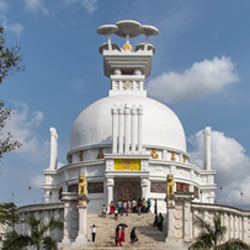
About Dhauli Hill, Bhubaneswar History Dhauli Hill in Bhubaneswar, Odisha, is a significant historical site that holds immense importance in Indian history. It is the location where the Kalinga War took place in 261 BC, resulting in a significant transformation in Emperor Ashoka’s life. After witnessing the devastating effects of war, Ashoka renounced violence and embraced Buddhism, leading to the spread of this peaceful religion across India. Architecture and Design The hill is adorned with a rock edict of Ashoka, depicting his conversion to Buddhism and his message of non-violence. The Shanti Stupa at Dhauli Hill is a prominent structure, symbolizing peace and harmony. The architectural design of the stupa showcases the influence of Buddhist art and culture, making it a serene and spiritually uplifting place for visitors. Best Time to Visit The best time to visit Dhauli Hill is during the winter months, between October and February. The weather during this time is pleasant, making it easier for tourists to explore the site comfortably. Additionally, the lush green surroundings of Dhauli Hill are at their most vibrant during the winter, creating a picturesque setting for visitors to enjoy. Cultural Significance Dhauli Hill holds immense cultural significance as it marks the beginning of Emperor Ashoka’s journey towards peace and non-violence. The site serves as a reminder of the destructive consequences of war and the importance of embracing compassion and harmony. The influence of Buddhism can be felt strongly at Dhauli Hill, making it a sacred place for followers of this peaceful religion. Pilgrimage Practices Pilgrims visiting Dhauli Hill often engage in spiritual practices such as meditation and prayer. They pay homage to Emperor Ashoka and seek blessings for peace and enlightenment. The peaceful ambiance of the hill makes it an ideal place for introspection and spiritual reflection, allowing pilgrims to connect with their inner selves and find solace in the teachings of Buddhism. Dress Code and Etiquette Visitors to Dhauli Hill are advised to dress modestly and respectfully, keeping in mind the sacred nature of the site. It is recommended to wear comfortable clothing and remove footwear before entering the Shanti Stupa or any other religious structures. Silence and reverence are expected from visitors to maintain the sanctity of the place and respect the spiritual beliefs of others. Activities and Experiences Visitors to Dhauli Hill can engage in a variety of activities and experiences, including exploring the rock edicts of Emperor Ashoka, admiring the intricate carvings on the Shanti Stupa, and enjoying panoramic views of the surrounding landscapes. Cultural events and festivals are also held at Dhauli Hill, providing visitors with an opportunity to immerse themselves in the rich heritage and traditions of Odisha. Art and Religious Symbols The art and religious symbols at Dhauli Hill reflect the spiritual heritage of Buddhism and the teachings of Emperor Ashoka. Intricate carvings, sculptures, and inscriptions adorn the site, depicting scenes from the life of Buddha and the message of peace and non-violence. The Shanti Stupa, in particular, is a masterpiece of Buddhist art, symbolizing the eternal quest for harmony and tranquility. Local Insights Local residents and guides offer valuable insights into the history and significance of Dhauli Hill, sharing stories and legends associated with the site. Visitors can learn about the cultural traditions of Odisha and the impact of Buddhism on the region, gaining a deeper understanding of the spiritual heritage that Dhauli Hill represents. Engaging with locals provides a unique perspective on the site and enhances the overall experience of exploring this sacred place.
Explore More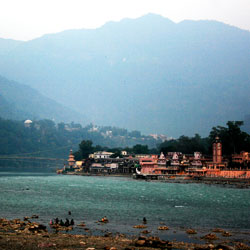
About The Triveni Ghat Temple The Triveni Ghat Temple, situated in the holy town of Rishikesh, is one of the most revered temples in India. It is located on the banks of the sacred Ganges River and is considered to be a place of great spiritual significance. The temple attracts thousands of pilgrims and tourists from all over the world who come to seek blessings and immerse themselves in the spiritual aura of the place. Architecture of Triveni Ghat Temple The Triveni Ghat Temple is a beautiful example of traditional Indian temple architecture. The temple is built in a classical North Indian style, with intricate carvings and designs adorning its walls and pillars. The main sanctum of the temple houses a magnificent idol of Lord Shiva, the presiding deity of the temple. The temple complex also includes smaller shrines dedicated to various other Hindu deities. The temple is surrounded by a serene and peaceful atmosphere, with the sound of the flowing Ganges adding to its spiritual charm. The ghats of the temple are a popular spot for devotees to take a holy dip in the sacred river and perform rituals and prayers. History The Triveni Ghat Temple has a long and rich history that dates back several centuries. According to ancient texts and legends, the temple was established at the confluence of the Ganges, Yamuna, and Saraswati rivers, which is considered to be a highly auspicious location in Hindu mythology. It is believed that by taking a dip in the holy waters of the Triveni Ghat, one can cleanse their sins and attain spiritual enlightenment. Over the years, the temple has been renovated and expanded several times to accommodate the growing number of devotees who come to seek blessings and offer prayers. Today, the Triveni Ghat Temple stands as a symbol of faith and devotion for millions of people who visit it every year. Best Time To Visit The best time to visit the Triveni Ghat Temple is during the winter months, from October to March, when the weather is pleasant and cool. This is also the time when several festivals and events are celebrated at the temple, making it a vibrant and lively place to visit. Another good time to visit the temple is during the monsoon season, from July to September, when the river is in full flow and the surrounding hills are lush and green. However, it is advisable to check the weather conditions before planning a trip during this time as heavy rains can sometimes lead to flooding in the area. How To Reach The Triveni Ghat Temple is located in the heart of Rishikesh, which is well-connected to major cities in India by road, rail, and air. The nearest airport is the Jolly Grant Airport in Dehradun, which is about 21 kilometers away from Rishikesh. From the airport, you can hire a taxi or take a bus to reach the temple. If you are traveling by train, the nearest railway station is in Haridwar, which is about 25 kilometers away from Rishikesh. From Haridwar, you can take a taxi or a bus to reach the temple. Rishikesh is also well-connected by road, with regular bus services from Delhi, Dehradun, and other major cities in North India. Significance Of The Triveni Ghat Temple The Triveni Ghat Temple holds great significance for devotees and pilgrims who come to seek blessings and perform rituals. It is believed that taking a dip in the sacred waters of the Ganges at the Triveni Ghat can cleanse one's sins and purify the soul. Many people also come to the temple to offer prayers and seek the blessings of Lord Shiva, who is considered to be the destroyer of evil and the god of transformation. Visiting the Triveni Ghat Temple is not just a religious experience but also a spiritual one, as the serene and tranquil atmosphere of the temple helps one to connect with their inner self and find peace and solace. The temple is also a popular spot for meditation and yoga, with many spiritual seekers coming here to practice mindfulness and self-reflection. In conclusion, the Triveni Ghat Temple in Rishikesh is a sacred place that attracts devotees and tourists from all walks of life. Its rich history, beautiful architecture, and spiritual significance make it a must-visit destination for anyone seeking a deeper connection with their faith and inner self.
Explore More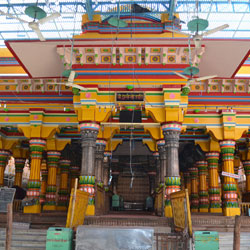
About The Dwarkadhish Temple The Dwarkadhish Temple is a prominent Hindu temple located in Mathura, Uttar Pradesh, India. This temple is dedicated to Lord Krishna, who is also known as Dwarkadhish, the ruler of the city of Dwarka. It is considered one of the holiest places for the followers of Lord Krishna and attracts thousands of devotees and tourists every year. Architecture of Dwarkadhish Temple The architecture of the Dwarkadhish Temple is a beautiful blend of Rajasthani and South Indian styles. The temple is adorned with intricate carvings, paintings, and sculptures that depict various episodes from the life of Lord Krishna. The main shrine of the temple houses the idol of Lord Krishna along with his beloved Radha. History The Dwarkadhish Temple was built in 1814 by Seth Gokuldas Parikh, a treasurer of the Gwalior state. It is said that the temple was constructed to fulfill the wish of a religious guru who dreamt of Lord Krishna residing in Mathura. Since then, the temple has been a significant pilgrimage site for the devotees of Lord Krishna. Best Time To Visit The best time to visit the Dwarkadhish Temple is during the festival of Janmashtami, which marks the birth of Lord Krishna. The temple is beautifully decorated and illuminated during this time, and the atmosphere is filled with devotion and festivities. Another auspicious time to visit is during the month of Shravan, as it is believed to be dear to Lord Krishna. How To Reach The Dwarkadhish Temple is located in the heart of Mathura city and is easily accessible by road. Mathura is well-connected to major cities like Delhi, Agra, and Jaipur by both road and rail. The nearest airport is in Agra, which is around 60 km away from Mathura. Visitors can also hire taxis or take local buses to reach the temple. Significance Of The Dwarkadhish Temple The Dwarkadhish Temple holds great significance for the devotees of Lord Krishna. It is believed that visiting the temple and offering prayers to Lord Krishna can fulfill one's wishes and bring peace and prosperity. The temple is also known for its spiritual aura and is a place where devotees come to seek blessings and solace. In conclusion, the Dwarkadhish Temple in Mathura is a sacred place that holds a special place in the hearts of Lord Krishna's devotees. The temple's stunning architecture, rich history, and spiritual significance make it a must-visit destination for anyone seeking a profound spiritual experience.
Explore More
About The Lingaraj Temple The Lingaraj Temple is one of the most prominent and largest temples in Bhubaneswar, dedicated to Lord Shiva. It is a significant pilgrimage site for Hindus and attracts devotees from all over the country. The temple is a masterpiece of Kalinga architecture and is a symbol of the rich cultural heritage of Odisha. Architecture of Lingaraj Temple The Lingaraj Temple is a splendid example of ancient Kalinga architecture. The temple complex is spread over a vast area and is surrounded by numerous smaller shrines. The main sanctum sanctorum of the temple is 180 feet in height and is adorned with intricate carvings and sculptures. The temple is built using sandstone and laterite and is known for its architectural grandeur. History The Lingaraj Temple dates back to the 11th century and was built by King Jajati Keshari. The temple has undergone various renovations and additions over the centuries, but its original charm and magnificence have been preserved. The temple is a testimony to the rich cultural and religious history of Odisha and is a must-visit for history buffs and architecture enthusiasts. Best Time To Visit The best time to visit the Lingaraj Temple is during the winter months, from October to March, when the weather is pleasant and conducive for sightseeing. The temple is also thronged by devotees during festivals like Shivaratri and Kartik Purnima, so visiting during these times can provide a glimpse into the religious fervor of the place. How To Reach The Lingaraj Temple is located in the heart of Bhubaneswar, the capital city of Odisha, making it easily accessible by road, rail, and air. The Bhubaneswar Railway Station is the nearest railhead, and the Biju Patnaik International Airport is well-connected to major cities in India. Local transportation options like buses and taxis are also available for reaching the temple. Significance Of The Lingaraj Temple The Lingaraj Temple holds immense religious significance for Hindus, particularly devotees of Lord Shiva. It is believed that the Lingaraj Temple is the true abode of Lord Shiva, and a visit to the temple can bestow blessings and spiritual fulfillment. The temple is a sanctum of peace and tranquility, where devotees can offer prayers and seek solace from the chaos of everyday life. In conclusion, the Lingaraj Temple in Bhubaneswar is a treasure trove of history, culture, and spirituality. Its architectural splendor, rich history, and religious significance make it a must-visit for every traveler to Odisha. Whether you are a history buff, a religious pilgrim, or an architecture enthusiast, the Lingaraj Temple will leave you awe-inspired with its grandeur and beauty.
Explore More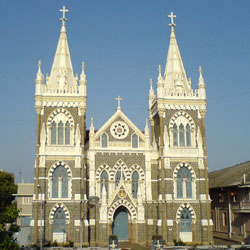
About Mount Mary Church, Mumbai Mount Mary Church, located in Bandra, Mumbai, is one of the most popular Roman Catholic churches in India. It is dedicated to Mother Mary and is also known as the 'Basilica of Our Lady of the Mount'. The church is known for its beautiful architecture, peaceful ambiance, and panoramic views of the Arabian Sea. Visiting Hours The church is open to visitors every day from 6:00 AM to 12:00 PM and 4:00 PM to 9:00 PM. History Mount Mary Church was originally built in 1640 by the Portuguese Jesuits and later rebuilt in 1761. It has since undergone several renovations and expansions, with the current structure dating back to the 1900s. Church Services and Events The church holds regular Mass services throughout the week, with special services on Sundays and religious holidays. It also hosts annual events such as the Feast of Mount Mary in September, which draws thousands of pilgrims and tourists. Architectural Facts The church's Gothic Revival style architecture features tall spires, intricate stained glass windows, and ornate decorations. The interior is adorned with religious paintings, statues, and a stunning altar. Accessibility and Directions Mount Mary Church is easily accessible by car or public transport. The nearest train station is Bandra, and there are also buses and taxis available. Parking is limited, so it is advisable to use public transport. The church is wheelchair accessible. Visitor's Information There is no entry fee to visit the church, but donations are welcomed. Guides are available on site to provide information about the history and significance of the church. Nearby attractions include Bandstand Promenade, Bandra Fort, and shopping markets. Visitors are advised to dress modestly when visiting the church.
Explore More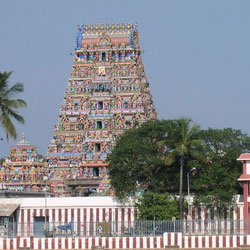
About the Kapaleeswarar Temple The Kapaleeswarar Temple, located in Mylapore, Chennai, is a revered Hindu temple dedicated to Lord Shiva. The temple is renowned for its magnificent Dravidian style architecture and is a significant religious site for devotees from all over the world. The temple is believed to have been built around the 7th century by the Pallava dynasty and remains an important pilgrimage destination in South India. Architecture of Kapaleeswarar Temple The Kapaleeswarar Temple showcases the classic Dravidian style of architecture with its impressive gopurams, mandapams, and intricate sculptures. The main entrance of the temple is adorned with a towering gopuram that is intricately carved with images of Hindu deities and mythological figures. The inner sanctum of the temple houses the main deity, Lord Kapaleeswarar, along with Goddess Karpagambal. The temple complex also features various shrines dedicated to other deities, as well as a tank known as the Sivagangai. History The history of the Kapaleeswarar Temple dates back to the 7th century when it was believed to have been built by the Pallava dynasty. Over the centuries, the temple underwent several renovations and expansions under the rule of various dynasties, including the Chola and Vijayanagara empires. The temple has stood as a symbol of religious and cultural significance in Chennai and continues to attract devotees and tourists alike. Best Time To Visit The best time to visit the Kapaleeswarar Temple is during the annual Arubathimoovar festival, which usually falls in the Tamil month of Panguni (March-April). During this festival, the temple is adorned with colorful decorations, and various rituals and cultural performances take place. It is a vibrant and festive time to witness the temple in all its glory and experience the traditional practices of Hindu worship. How To Reach The Kapaleeswarar Temple is conveniently located in Mylapore, Chennai, and is easily accessible by road. The nearest railway station is Chennai Central, which is well connected to major cities in India. Visitors can also reach the temple by taking a bus or hiring a taxi from various parts of Chennai. The temple is a popular tourist attraction and is frequented by devotees and travelers throughout the year. Significance of the Kapaleeswarar Temple The Kapaleeswarar Temple holds great religious significance for devotees of Lord Shiva and Goddess Karpagambal. It is believed that worshiping at the temple can bring blessings, prosperity, and fulfillment of wishes. The temple is also associated with various legends and stories from Hindu mythology, making it a sacred place for spiritual seekers. The annual festivals and rituals held at the temple further enhance its significance as a center of religious and cultural heritage in Chennai. Overall, the Kapaleeswarar Temple is a must-visit destination for those interested in exploring the rich cultural and architectural heritage of South India. Its stunning architecture, historical importance, and spiritual significance make it a truly unique and unforgettable experience for visitors.
Explore More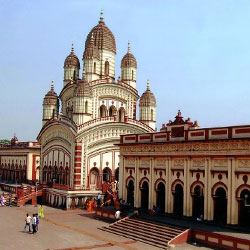
About The Kali Temple The Kali Temple, also known as Kalighat Kali Temple, is one of the most famous temples in Kolkata, India. It is dedicated to Goddess Kali, the Hindu goddess of time, creation, destruction, and power. The temple is located in the Kalighat area of Kolkata and is visited by thousands of devotees and tourists every year. Architecture of Kali Temple The Kali Temple's architecture is a unique blend of traditional Bengali style and modern design. The temple complex is spread over a large area and consists of a main temple building, several smaller shrines, a courtyard, and a pond. The main temple is adorned with intricate carvings and sculptures of Hindu gods and goddesses, and the central deity, Goddess Kali, is depicted in her fierce form, standing on Lord Shiva. History The history of the Kali Temple dates back to the 16th century when a small temple was built on the banks of the Adi Ganga river. Over the centuries, the temple was renovated and expanded several times, and the current structure was built in the early 19th century by the Sabarna Roy Choudhury family. The temple has since become a major pilgrimage site for devotees of Goddess Kali. Best Time To Visit The best time to visit the Kali Temple is during the festival of Kali Puja, which usually falls in October or November. The temple is beautifully decorated with lights, flowers, and colorful decorations during this time, and special prayers and rituals are performed to honor the goddess. Other auspicious times to visit the temple include Tuesdays and Saturdays, which are considered sacred days for worshipping Goddess Kali. How To Reach The Kali Temple is located in the Kalighat area of Kolkata, which is well-connected by road, rail, and air. The nearest railway station is Kalighat Metro Station, which is just a short walk away from the temple. The temple is also easily accessible by bus or taxi from any part of the city. For those coming from out of town, the Kolkata International Airport is the nearest airport, located about 20 kilometers away from the temple. Significance Of The Kali Temple The Kali Temple holds great significance for devotees of Goddess Kali, who believe that worshipping her can bring protection, prosperity, and spiritual fulfillment. The temple is also a popular tourist attraction, drawing visitors from all over the world who come to marvel at its stunning architecture and experience the vibrant culture and traditions of Kolkata. The Kali Temple is not just a place of worship but also a symbol of the rich heritage and deep-rooted spirituality of India. Overall, the Kali Temple in Kolkata is a must-visit destination for anyone seeking a spiritual experience or a glimpse into the colorful tapestry of Indian culture and tradition.
Explore More
About The Hadimba Temple The Hadimba Temple, also known as the Hidimba Devi Temple, is a unique temple located in Manali, Himachal Pradesh. It is dedicated to Hidimba Devi, a character from the Indian epic Mahabharata. The temple is surrounded by beautiful cedar forests and is a popular tourist destination in Manali. Architecture Of Hadimba Temple The Hadimba Temple is built in a pagoda style with intricately carved wooden doors, walls, and a cone-shaped roof. The temple is adorned with figures and symbols of animals and deities from Hindu mythology. The architecture of the temple is a fine example of traditional Himachali craftsmanship and attracts visitors from all over the world. History The Hadimba Temple was built in 1553 by Raja Bahadur Singh of Kullu. It is believed that the temple was constructed in honor of Hidimba Devi, the wife of Bhima, one of the Pandava brothers. Legend has it that Hidimba Devi performed penance at this spot and was blessed by the gods with divine powers. Best Time To Visit The best time to visit the Hadimba Temple is during the summer months of March to June when the weather is pleasant and the surrounding landscapes are lush green. The temple is also beautifully decorated during the Dussehra festival, which falls in October. It is advisable to avoid visiting during the winter months as the region experiences heavy snowfall. How To Reach The Hadimba Temple is located in the heart of Manali and is easily accessible by road. Manali is well-connected by road to major cities like Delhi, Chandigarh, and Shimla. The nearest airport is Kullu-Manali Airport, which is around 50 kilometers away from the temple. Visitors can also take a bus or hire a taxi to reach the temple from Manali town. Significance Of The Hadimba Temple The Hadimba Temple holds great significance for the local people of Manali as well as for tourists. It is believed that worshipping Hidimba Devi at this temple helps in seeking her blessings for protection and prosperity. The temple is also a popular pilgrimage site for devotees of the goddess. The serene surroundings and peaceful ambiance of the temple make it a perfect place for meditation and spiritual contemplation.
Explore More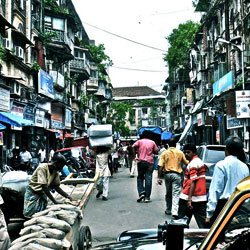
North of Crawford Market, are the narrow lanes of Kalbadevi a predominantly Muslim area hemmed in by laundry-draped chawls, which is home to a seething mass of people. It is a complete contrast to South Mumbai cleanliness and orderliness and is a different world in itself giving insight into the lives of people living in such chawls. No visit to Mumbai is complete without a foray into the bazaars of Kalbadevi, north of Crawford Market. It is a perfect foil to the relative space, orderliness and modernity of South Mumbai.
Explore More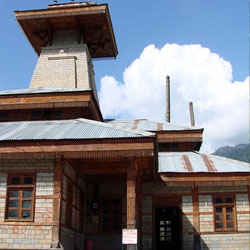
About The Manu Temple The Manu Temple in Manali is dedicated to the sage Manu, who is believed to be the creator of the world and the writer of the ancient Indian scriptures, the Manusmriti. It is believed that Manali gets its name from Manu, who is said to have meditated in this area. The temple is a popular pilgrimage site and a must-visit for those seeking spiritual solace in the lap of the Himalayas. Architecture Of Manu Temple The Manu Temple is built in the traditional Himachali style of architecture, with wooden carvings adorning its facade. The temple is located on the banks of the Beas River, surrounded by lush green forests and snow-capped mountains. The beauty of the temple lies in its simplicity and tranquility, making it a serene place for meditation and prayer. History The Manu Temple is steeped in history and mythology. According to legend, Manu saved the Vedas and the seven sages from the great flood by building a boat and sailing to safety. It is believed that Manu settled in Manali after the flood and established a new civilization. The temple stands as a testimony to his legacy and the ancient roots of Indian culture. Best Time To Visit The best time to visit the Manu Temple is during the summer months of April to June, when the weather is pleasant and the flowers are in full bloom. The monsoon season from July to September brings heavy rainfall, making it difficult to navigate the hilly terrain. Winter, from October to February, brings snowfall and freezing temperatures, making it challenging to reach the temple. How To Reach The Manu Temple is located in the old town of Manali, about 3 km from the main market. Visitors can reach the temple by taking a short walk along the winding pathways or hire a taxi or auto-rickshaw from the town center. The nearest airport is Kullu-Manali Airport, about 50 km away, and the nearest railway station is Joginder Nagar Railway Station, about 165 km away. Significance Of The Manu Temple The Manu Temple holds great significance for the locals and pilgrims who visit to seek the blessings of the sage Manu. It is believed that a dip in the holy waters of the Beas River near the temple can cleanse one of their sins and bring peace and prosperity. The temple also offers panoramic views of the surrounding mountains and valleys, making it a peaceful retreat for those seeking spiritual fulfillment.
Explore More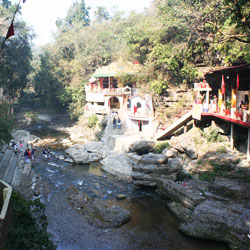
About The Tapkeshwar Temple The Tapkeshwar Temple is a renowned Hindu temple located in Dehradun, Uttarakhand. It is dedicated to Lord Shiva and is believed to be one of the oldest temples in the region. The temple is situated on the banks of the Asan River and is surrounded by lush greenery, making it a peaceful and serene place for devotees to visit. Architecture of Tapkeshwar Temple The architecture of the Tapkeshwar Temple is a perfect blend of traditional and modern styles. The temple features intricate carvings and sculptures that depict various Hindu mythological stories. The main sanctum sanctorum houses the Shivlinga, which is worshipped by devotees. The temple also has a large courtyard where devotees can offer prayers and perform rituals. History The history of the Tapkeshwar Temple dates back to ancient times. It is believed that the temple was built by Guru Dronacharya, the legendary teacher of the Kauravas and Pandavas from the epic Mahabharata. According to legend, Lord Shiva himself appeared at this place to meditate, which is why the temple holds great significance for devotees. Best Time To Visit The best time to visit the Tapkeshwar Temple is during the months of February to June and September to November when the weather is pleasant and suitable for sightseeing. The temple also sees a large number of devotees during the festival of Maha Shivratri, which is celebrated with great pomp and show. How To Reach The Tapkeshwar Temple is easily accessible from Dehradun city. It is located about 6 kilometers from the city center and can be reached by road. Visitors can hire a taxi or take a bus to reach the temple. The nearest railway station is in Dehradun, and the nearest airport is the Jolly Grant Airport in Dehradun. Significance Of The Tapkeshwar Temple The Tapkeshwar Temple holds great significance for devotees of Lord Shiva. It is believed that worshipping at this temple can fulfill wishes and bring prosperity to the devotees. The natural surroundings of the temple add to its peaceful and spiritual ambiance, making it a popular destination for pilgrims and tourists alike. In conclusion, the Tapkeshwar Temple in Dehradun is a sacred place of worship that attracts devotees from near and far. With its rich history, beautiful architecture, and serene surroundings, the temple offers a unique spiritual experience for visitors. Whether you are a religious pilgrim or a curious traveler, a visit to the Tapkeshwar Temple is sure to leave you feeling refreshed and spiritually uplifted.
Explore More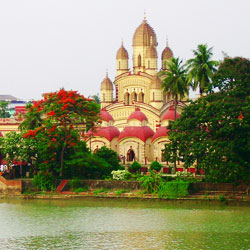
About The Dakshineswar Temple The Dakshineswar Temple is a famous Hindu temple located in Dakshineswar near Kolkata, West Bengal. It is dedicated to Goddess Kali and is known for its unique architecture and spiritual significance. The temple complex is situated on the eastern bank of the Hooghly River and is a popular pilgrimage site for devotees from all over India. Architecture of Dakshineswar Temple The Dakshineswar Temple was built in the traditional Bengali Navaratna style of architecture. The main temple is surrounded by 12 smaller shrines dedicated to different forms of the Goddess Kali. The temple complex also includes a large courtyard, a bathing ghat, and a temple dedicated to Lord Shiva. History The Dakshineswar Temple was built in 1855 by Rani Rashmoni, a wealthy philanthropist and devotee of Goddess Kali. The construction of the temple was supervised by Ramakrishna Paramahamsa, a renowned saint and spiritual leader. The temple gained fame due to the presence of Ramakrishna Paramahamsa, who attracted a large number of followers to the temple. Best Time To Visit The best time to visit the Dakshineswar Temple is during the annual festival of Kali Puja, which usually falls in October or November. The temple is beautifully decorated during this time, and special rituals and prayers are conducted in honor of the Goddess Kali. Visitors can witness cultural performances, processions, and other festivities during the festival. How To Reach The Dakshineswar Temple is easily accessible by road, rail, and waterways. It is located about 12 kilometers from Kolkata city center and can be reached by taxi, bus, or auto-rickshaw. The nearest railway station is Dakshineswar Railway Station, which is well-connected to Kolkata and other major cities in India. Visitors can also take a boat ride across the Hooghly River to reach the temple. Significance Of The Dakshineswar Temple The Dakshineswar Temple holds immense significance for devotees of Goddess Kali. It is believed that worshipping at the temple can help devotees overcome obstacles, attain spiritual liberation, and seek the blessings of the Divine Mother. The temple is also associated with the teachings of Ramakrishna Paramahamsa, who preached the message of universal love and harmony. In conclusion, the Dakshineswar Temple is not just a place of worship but a symbol of spiritual heritage and cultural richness. It continues to attract visitors and devotees from all walks of life, seeking solace, guidance, and blessings from the Divine. Whether you are a religious pilgrim or a curious traveler, a visit to the Dakshineswar Temple is sure to leave you in awe of its beauty and serenity.
Explore More
About The Vishwanath Temple in Varanasi The Vishwanath Temple, also known as the Kashi Vishwanath Temple, is one of the most revered Hindu temples in India. Located in the holy city of Varanasi, this temple is dedicated to Lord Shiva, who is considered the presiding deity of the city. The temple is situated on the western bank of the sacred Ganges River and holds immense spiritual significance for followers of Hinduism. Architecture of Vishwanath Temple The Vishwanath Temple is a stunning example of Hindu temple architecture. The main shrine is made of solid gold, and the spire of the temple is adorned with intricate carvings and sculptures. The temple complex is also home to several smaller shrines dedicated to various deities, as well as a large courtyard where devotees can gather for prayers and rituals. The temple's architecture reflects the rich cultural and religious heritage of Varanasi. History The history of the Vishwanath Temple dates back to ancient times. It is believed that the original temple was built by a local king in the 11th century. However, the current structure of the temple was constructed in the 18th century by Queen Ahilyabai Holkar of Indore. Over the years, the temple has undergone several renovations and restorations, but its spiritual significance has remained intact. Best Time To Visit The best time to visit the Vishwanath Temple is during the Hindu festival of Mahashivaratri, which is dedicated to Lord Shiva. This festival usually falls in the month of February or March and attracts thousands of devotees from all over the country. The temple is also crowded during other major Hindu festivals like Diwali and Navratri. However, if you prefer a quieter and more peaceful visit, it is advisable to avoid these peak times. How To Reach The Vishwanath Temple is located in the heart of Varanasi, so it is easily accessible by road, rail, and air. The nearest airport is the Lal Bahadur Shastri Airport, which is located about 20 kilometers away from the city. Varanasi Junction is the main railway station in the city, and there are regular trains connecting Varanasi to major cities like Delhi, Mumbai, and Kolkata. From the railway station or airport, you can hire a taxi or take a local bus to reach the temple. Significance Of The Vishwanath Temple The Vishwanath Temple holds immense significance for Hindus, as it is believed to be one of the twelve Jyotirlingas, which are considered the most sacred abodes of Lord Shiva. Devotees believe that a visit to the temple and offering prayers at the shrine can help in attaining spiritual enlightenment and liberation from the cycle of birth and death. The temple is also believed to be a place where wishes are fulfilled and prayers are answered. In conclusion, the Vishwanath Temple in Varanasi is not just a religious site, but a symbol of faith, devotion, and spiritual awakening. Its stunning architecture, rich history, and spiritual significance make it a must-visit destination for anyone seeking a deeper connection with the divine. Whether you are a devout follower of Hinduism or simply a curious traveler, a visit to the Vishwanath Temple is sure to leave a lasting impression on your soul.
Explore More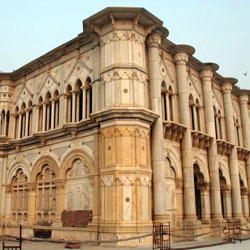
About The Dayal Bagh Temple in Agra The Dayal Bagh Temple, also known as the Samadhi Temple, is a beautiful white marble structure located in Agra, Uttar Pradesh. It is a sacred place of worship for followers of the Radhasoami Faith, a spiritual tradition that emphasizes meditation and self-realization. The temple is dedicated to the founder of the Radhasoami Faith, Swami Shiv Dayal Singh, who is also known as Soamiji Maharaj. The serene and peaceful ambiance of the temple complex attracts visitors seeking spiritual solace and inner peace. Architecture Of Dayal Bagh Temple The Dayal Bagh Temple is renowned for its stunning architecture and intricate marble carvings. The main structure of the temple is adorned with intricate designs and carvings that showcase the skill and craftsmanship of the artisans. The central dome of the temple is surrounded by smaller domes, creating a sense of harmony and balance in the architecture. The white marble used in the construction of the temple gives it a pristine and ethereal appearance, making it a truly mesmerizing sight to behold. History The construction of the Dayal Bagh Temple began in 1904 and continues to this day, as per the Radhasoami tradition of uninterrupted work. The temple is being constructed entirely through voluntary contributions and labor, without the use of any heavy machinery. The intricate carvings and designs on the marble are all handcrafted by skilled artisans, showcasing the dedication and devotion of the followers of the Radhasoami Faith. The temple stands as a symbol of faith, unity, and the spirit of service among its followers. Best Time To Visit The best time to visit the Dayal Bagh Temple is during the early morning or late afternoon when the temple is bathed in soft sunlight, creating a magical ambiance. The temple complex is open to visitors every day, but it is advisable to avoid visiting during peak hours to enjoy a peaceful and serene experience. The cool winter months from October to March are considered the ideal time to visit Agra and explore the temple at leisure. How To Reach The Dayal Bagh Temple is located in the city of Agra, which is well-connected by road, rail, and air. The nearest airport to Agra is the Kheria Airport, which is about 15 kilometers away from the city center. Agra is also well-connected by train, with regular trains running from major cities like Delhi, Mumbai, and Jaipur. Once in Agra, visitors can easily reach the Dayal Bagh Temple by hiring a taxi or an auto-rickshaw from the city center. Significance Of The Dayal Bagh Temple The Dayal Bagh Temple holds great significance for followers of the Radhasoami Faith, as it is believed to be the final resting place of Swami Shiv Dayal Singh, the founder of the faith. The temple serves as a place for meditation, prayer, and spiritual contemplation for its followers, who come here seeking peace and enlightenment. The serene atmosphere of the temple complex, surrounded by lush gardens and fountains, provides a perfect setting for inner reflection and spiritual rejuvenation.
Explore More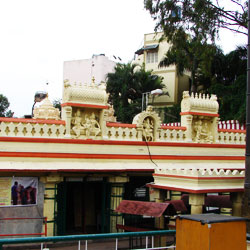
About The Gavi Gangadhareshwara Temple The Gavi Gangadhareshwara Temple, located in Bangalore, is a famous cave temple dedicated to Lord Shiva. The temple is a perfect blend of natural beauty and architectural marvel, attracting devotees and tourists alike. It is believed to have been built during the 9th century by Kempegowda, the founder of Bangalore city. Architecture of Gavi Gangadhareshwara Temple The Gavi Gangadhareshwara Temple is known for its unique architecture and design. The temple is carved out of a single rock, with intricate carvings and sculptures adorning its walls. The main sanctum sanctorum houses a magnificent Shiva Lingam, with a narrow passage that allows sunlight to fall directly on the lingam during certain times of the year, creating a magical spectacle. History According to legend, Sage Gauthama and his wife Ahalya once performed penance at this sacred spot. It is believed that Lord Shiva appeared before them in the form of a 'Ganda' (a bull) and granted them their wishes. Hence, the temple came to be known as Gavi Gangadhareshwara Temple, with 'Gavi' meaning cave and 'Gangadhareshwara' referring to Lord Shiva. Best Time To Visit The best time to visit the Gavi Gangadhareshwara Temple is during the Makara Sankranti festival, which usually falls in January. Devotees flock to the temple to witness the spectacular sight of sunlight passing through the horns of the Nandi idol and illuminating the Shiva Lingam. It is a divine experience that should not be missed. How To Reach The Gavi Gangadhareshwara Temple is located in Gavipuram, Bangalore, and is easily accessible by road. The nearest bus stop is Gavipuram Guttahalli, and the nearest railway station is Bangalore City Junction. From there, one can easily hire a taxi or auto-rickshaw to reach the temple. Significance Of The Gavi Gangadhareshwara Temple The Gavi Gangadhareshwara Temple holds immense significance for devotees of Lord Shiva. It is believed that worshipping at this temple can help in overcoming obstacles and fulfilling one's wishes. The temple also serves as a symbol of heritage and culture, showcasing the rich history and architectural brilliance of ancient India. Overall, the Gavi Gangadhareshwara Temple in Bangalore is a must-visit for those seeking spiritual solace and architectural beauty. Its unique cave-like structure, stunning carvings, and divine aura make it a truly mesmerizing destination for all visitors.
Explore More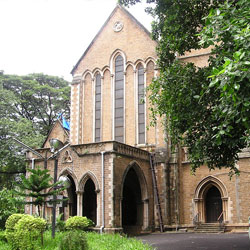
About Afghan Church, Mumbai The Afghan Church, located in Mumbai, India, is a historical and iconic church that serves as a place of worship for the Afghan Christian community in the city. The church is known for its beautiful architecture and rich history, making it a popular destination for tourists and locals alike. Visiting Hours The Afghan Church is open to visitors on weekdays from 9:00 AM to 5:00 PM. It is also open on weekends, but the hours may vary, so it is recommended to check ahead of time. History The Afghan Church was built in the 19th century to commemorate the British and Indian soldiers who lost their lives in the First Afghan War. The church was consecrated in 1858 and has since become a symbol of peace and remembrance. Church Services and Events The Afghan Church holds regular services for the Afghan Christian community, as well as special events and festivals throughout the year. The timings for these services and events may vary, so visitors are advised to check ahead of time. Architectural Facts The Afghan Church is known for its Gothic Revival architecture, with its towering spires and intricate carvings. The church is also home to beautiful stained glass windows and a majestic altar, making it a sight to behold for visitors. Accessibility and Directions The Afghan Church is easily accessible by car or public transport. There is parking available near the church for visitors who are driving. The church is also wheelchair accessible, making it inclusive for all visitors. Visitor's Information There is no entry fee to visit the Afghan Church, and guides are available for those who wish to learn more about the church's history and significance. Nearby attractions to visit around the church include the Gateway of India and Colaba Causeway. There is no specific dress code for visitors, but it is recommended to dress modestly out of respect for the church.
Explore More
About The Mumbadevi Temple The Mumbadevi Temple is a Hindu temple located in Mumbai, Maharashtra. It is dedicated to Mumbadevi, who is believed to be the city's patron goddess. The temple is one of the oldest in Mumbai and holds great religious significance among the locals. Architecture of Mumbadevi Temple The Mumbadevi Temple is built in the traditional Hindu architectural style. The temple's exterior is adorned with intricate carvings and sculptures depicting various Hindu deities. The sanctum sanctorum houses the idol of Mumbadevi, which is made of black stone and adorned with jewels. History The history of the Mumbadevi Temple dates back to the 16th century when the city of Mumbai was known as Bombay. It is said that the temple was originally located at Bori Bunder, which was one of the seven islands that formed Mumbai. Over the years, as the city expanded, the temple was relocated to its current location in Zaveri Bazaar. Best Time To Visit The Mumbadevi Temple can be visited throughout the year, but the best time to visit is during the Navratri festival, which is dedicated to the goddess Durga. The temple is beautifully decorated during this time, and devotees from all over the city come to seek the blessings of Mumbadevi. How To Reach The Mumbadevi Temple is located in the heart of Mumbai, making it easily accessible by both public and private transportation. The nearest railway station is Chhatrapati Shivaji Terminus, which is just a short distance away from the temple. Visitors can also take a bus or taxi to reach the temple. Significance Of The Mumbadevi Temple The Mumbadevi Temple holds great significance among the locals of Mumbai. It is believed that Mumbadevi is the guardian deity of the city and protects its residents from harm. Devotees visit the temple to seek blessings for prosperity, protection, and success in various endeavors. The temple also attracts tourists who are interested in exploring the religious and cultural heritage of Mumbai. In conclusion, the Mumbadevi Temple is a sacred place of worship that symbolizes the rich history and tradition of Mumbai. It is a must-visit destination for anyone looking to experience the spiritual essence of the city and seek the blessings of the goddess Mumbadevi.
Explore More
About The Ramanathaswamy Temple The Ramanathaswamy Temple, located in the town of Rameswaram in Tamil Nadu, is one of the most famous and significant temples in India. It is dedicated to Lord Shiva and is considered one of the twelve Jyotirlinga temples, where Lord Shiva is worshipped in the form of a "lingam." The temple is renowned for its architectural beauty and its religious significance, attracting millions of devotees and tourists from all over the world. Architecture of Ramanathaswamy Temple The Ramanathaswamy Temple is a remarkable example of Dravidian architecture. The temple complex covers an area of 15 acres and is known for its massive gopurams (towers) and intricately carved pillars. The main temple tower, also known as the Rajagopuram, stands at a height of 53 meters and is a sight to behold. The temple's corridors, known as prakarams, are adorned with beautiful sculptures and frescoes that depict various scenes from Hindu mythology. History The history of the Ramanathaswamy Temple dates back to ancient times. According to Hindu mythology, Lord Rama, along with his wife Sita and brother Lakshmana, prayed to Lord Shiva at this very spot before embarking on their journey to Lanka to rescue Sita from the demon king Ravana. The temple is believed to have been established by Lord Rama himself and has since been a revered pilgrimage site for Hindus. Best Time To Visit The best time to visit the Ramanathaswamy Temple is during the winter months, from November to February, when the weather is pleasant and conducive for sightseeing. The temple also sees a large influx of devotees during festivals such as Maha Shivaratri and Navratri, when the temple is adorned with lights and decorations, creating a festive atmosphere. How To Reach Rameswaram is well-connected to major cities in Tamil Nadu and other parts of India. The nearest airport is located in Madurai, around 174 kilometers away, while the closest railway station is in Rameswaram itself. One can also reach Rameswaram by road, as the town is well-connected by a network of highways. Once in Rameswaram, the Ramanathaswamy Temple is easily accessible by auto-rickshaws, taxis, and buses. Significance Of The Ramanathaswamy Temple The Ramanathaswamy Temple holds great significance for Hindus, as it is believed to be one of the holiest places in India. Devotees come here to seek the blessings of Lord Shiva and to wash away their sins in the sacred waters of the Agni Teertham, a holy tank within the temple premises. The temple also houses 22 wells, each with water of a different taste and believed to have medicinal properties. Overall, the Ramanathaswamy Temple is a place of spiritual solace and architectural splendor, drawing visitors from far and wide to experience its divine aura and rich cultural heritage.
Explore More
About The Devi Jagadambi Temple The Devi Jagadambi Temple is one of the most prominent temples in Khajuraho, a UNESCO World Heritage Site in Madhya Pradesh, India. Dedicated to the Hindu goddess Devi, this temple is a fine example of the Nagara style of architecture and is known for its intricate carvings and sculptures. Architecture of Devi Jagadambi Temple The Devi Jagadambi Temple was constructed using sandstone and is characterized by its shikharas or spires. The temple has a sanctum sanctorum, a mandapa, and a porch. The outer walls of the temple are adorned with beautifully carved sculptures of various gods and goddesses, celestial beings, and scenes from Hindu mythology. The intricate detailing on the carvings showcases the skill and craftsmanship of the artisans who built the temple. History The Devi Jagadambi Temple was built between 1000 and 1025 AD during the Chandela dynasty rule. The temple is believed to have been constructed by King Kirttivarman and is dedicated to the goddess Devi, who is considered the supreme mother and the embodiment of feminine energy in Hinduism. The temple was originally dedicated to Lord Vishnu but was later rededicated to Devi, the mother goddess. Best Time To Visit The best time to visit the Devi Jagadambi Temple is during the winter months of October to March when the weather is pleasant and conducive for exploring the temple complex. The annual Khajuraho Dance Festival, which takes place in February, is also a great time to visit the temple as it showcases traditional Indian classical dance forms against the backdrop of the beautifully lit temple complex. How To Reach The Devi Jagadambi Temple is located in the western group of temples in Khajuraho and is easily accessible by road. Khajuraho has its own domestic airport, which is well-connected to major cities like Delhi, Mumbai, and Varanasi. The nearest railway station is Khajuraho Railway Station, which is well-connected to cities like Delhi, Agra, and Varanasi. Buses and taxis are also available for local transport within Khajuraho. Significance Of The Devi Jagadambi Temple The Devi Jagadambi Temple holds great religious significance for devotees of the goddess Devi. It is believed that worshipping at this temple fulfills desires and brings blessings from the goddess. The temple is also a popular pilgrimage site for devotees of the Hindu faith and attracts visitors from all over the world who come to marvel at its architectural beauty and spiritual aura. In conclusion, the Devi Jagadambi Temple in Khajuraho is a testament to the rich cultural and architectural heritage of India. With its stunning carvings, religious significance, and historical importance, this temple continues to be a revered site for worshippers and visitors alike.
Explore More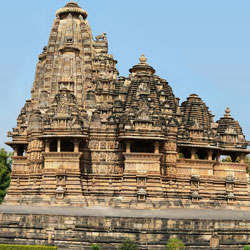
About The Vishwanath Temple in Khajuraho The Vishwanath Temple is a Hindu temple dedicated to Lord Shiva, located in the famous temple town of Khajuraho in Madhya Pradesh, India. It is one of the most prominent temples in Khajuraho and attracts a large number of devotees and tourists from all over the world. Architecture of Vishwanath Temple The Vishwanath Temple is known for its exquisite architecture and intricate carvings. The temple is built in the Nagara style of architecture, which is typical of North India. The main shrine of the temple is surrounded by several smaller shrines, each dedicated to various Hindu gods and goddesses. The temple is adorned with beautiful sculptures depicting various scenes from Hindu mythology. The main entrance of the temple is adorned with a towering spire, known as a shikhara, which is beautifully carved and intricately designed. The temple is also known for its intricately carved pillars, which are adorned with beautiful motifs and sculptures. History The Vishwanath Temple was built by the Chandela dynasty, who ruled over the region during the 10th and 11th centuries. The temple is believed to have been constructed in the 11th century and is a fine example of the architectural prowess of the Chandela dynasty. Over the years, the temple has undergone several renovations and restorations to maintain its grandeur and beauty. Despite the passage of time, the Vishwanath Temple continues to stand as a testament to the rich cultural and architectural heritage of India. Best Time To Visit The best time to visit the Vishwanath Temple is during the winter months, from October to March, when the weather is pleasant and ideal for sightseeing. This is also the peak tourist season in Khajuraho, with many cultural events and festivals taking place in and around the temple town. It is advisable to avoid visiting the temple during the scorching summer months, from April to June, as the temperatures can soar to uncomfortable levels. The monsoon season, from July to September, can also be a good time to visit, as the surrounding landscape becomes lush and green after the rains. How To Reach The Vishwanath Temple is located in the heart of Khajuraho town, making it easily accessible by road. Khajuraho has a well-developed network of roads that connect it to major cities in Madhya Pradesh and neighboring states. The nearest airport to Khajuraho is the Khajuraho Airport, which is well-connected to major cities like Delhi, Mumbai, and Varanasi. The nearest railway station is Khajuraho Railway Station, which is connected to cities like Delhi, Agra, and Varanasi. Significance Of The Vishwanath Temple The Vishwanath Temple holds great religious significance for the devotees of Lord Shiva. It is believed that a visit to the temple and offering prayers at the shrine can bring peace, prosperity, and blessings to the devotees. The temple also serves as a cultural and historical landmark, showcasing the architectural brilliance of the Chandela dynasty. The intricate carvings and sculptures at the temple are a testimony to the rich artistic heritage of India. Overall, the Vishwanath Temple in Khajuraho is a must-visit for anyone interested in exploring the cultural, historical, and religious aspects of India. Its grand architecture, beautiful sculptures, and serene ambience make it a truly enchanting place to visit.
Explore More